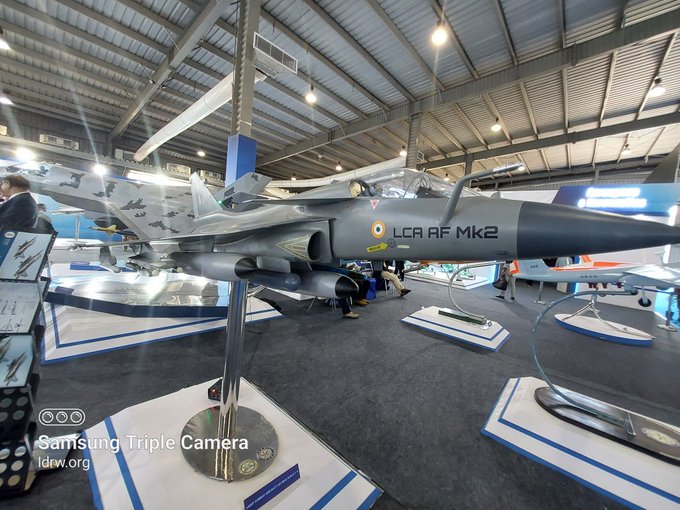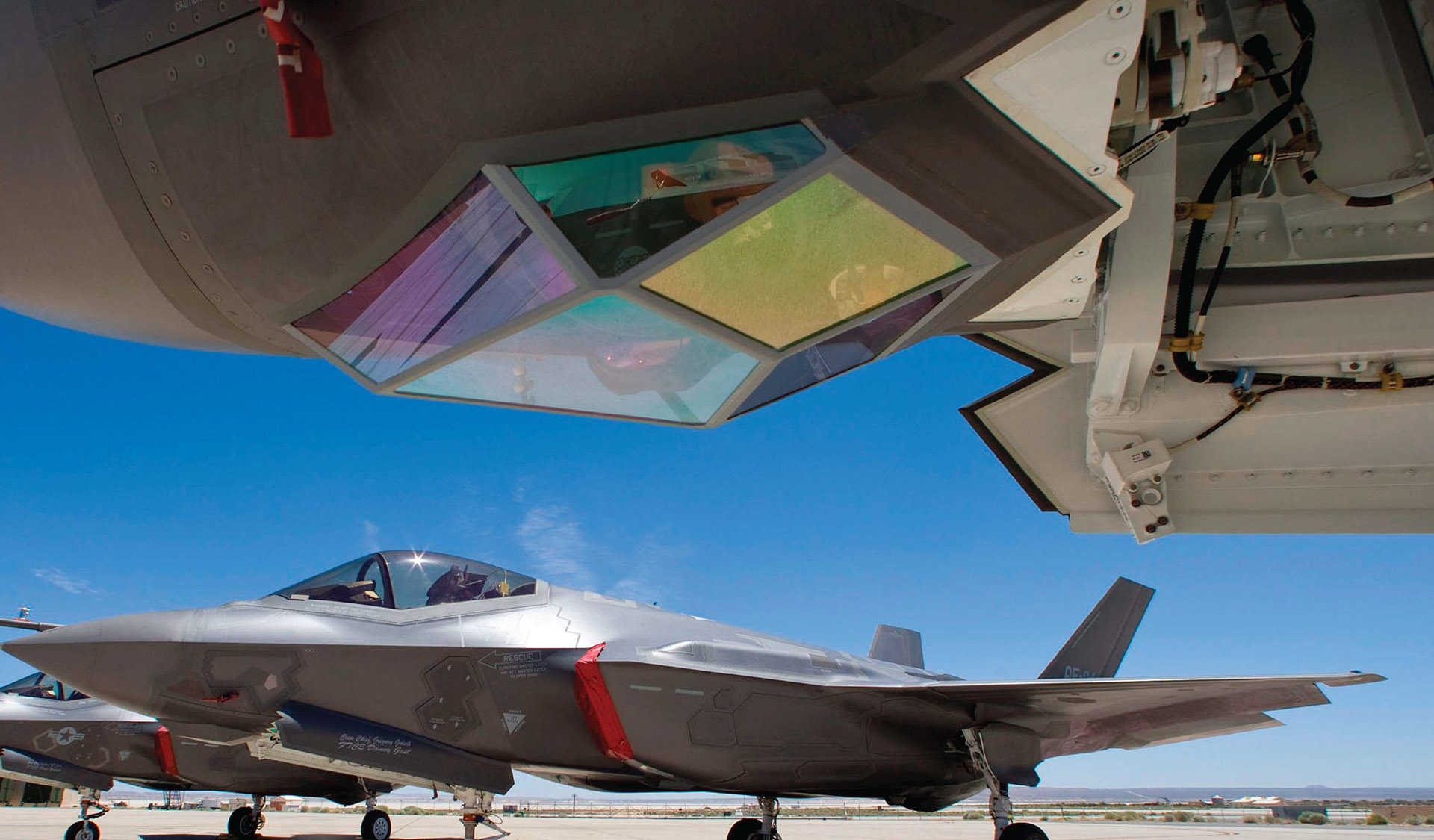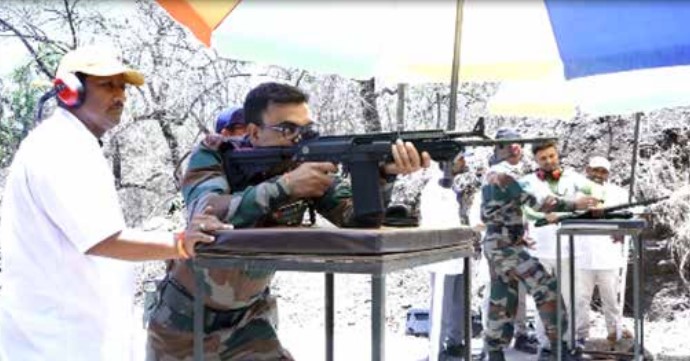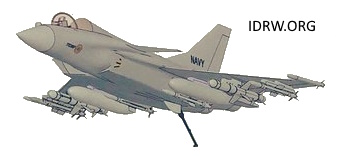SOURCE: RAUNAK KUNDE / NEWS BEAT / IDRW.ORG
:quality(70)/cloudfront-us-east-1.images.arcpublishing.com/archetype/CHYLWIXJGVCU7DRVA3INZNNMY4.jpg)
During Prime Minister Narendra Modi’s first bilateral visit to Russia since securing his third term, Russia reignited its proposal for joint production of its advanced S-500 air defence system. This development comes as India continues to bolster its defence capabilities, having already procured the Russian S-400 system for its border security.
The S-500 air defence system developed as a successor to the S-400, represents a significant leap in aerial defence technology. It is designed to intercept a wide array of aerial threats, including unmanned aerial vehicles (UAVs), hypersonic missiles, and ballistic missiles, at ranges extending up to 600 kilometres.
Continue readingSOURCE: RAUNAK KUNDE / NEWS BEAT / IDRW.ORG

The Indian Ministry of Defence is poised to greenlight Project 17B, a significant expansion of the Indian Navy’s fleet. This ambitious project will see the construction of eight advanced stealth frigates, likely to be divided between Mazagon Dock Limited (MDL) and Garden Reach Shipbuilders and Engineers (GRSE). With an estimated cost exceeding $7.5 billion, Project 17B represents a major investment in India’s naval capabilities.
Building upon the success of Project 17A, which is currently underway, the new frigates will incorporate the same stealth design and advanced features as the Nilgiri-class frigates. However, Project 17B ships will benefit from further refinements and technological upgrades.
Continue readingSOURCE: AFI

Hindustan Aeronautics Limited (HAL) has announced a significant step forward in the development of the Light Combat Aircraft (LCA) AF Mk-2. The company has signed an amendment to the Memorandum of Understanding (MoU) with the Aeronautical Development Agency (ADA), expanding its role in the program.
Under the revised MoU, HAL will be responsible for completing the LCA AF Mk-2 development and securing operational clearance during the Full Scale Engineering Development (FSED) Phase-3. This crucial phase of the project is valued at a substantial Rs. 2970.00 Crores, including a Foreign Exchange component of Rs. 285.00 Crores.
Continue readingSOURCE: AFI

Redon Systems Private Limited announced a major milestone in the development of its Canister Launched Loitering Munition, Achuk. Successfully tested at an altitude exceeding 4500 meters in Leh, under the watchful eye of the Northern Command, Indian Army, Achuk has demonstrated unparalleled capabilities in high-altitude environments.
Designed with an impressive endurance of 50+ minutes and a payload capacity of 1.5 kg (available in HE and HEAT variants), Achuk stands out as a potentially unique loitering munition capable of operating in such extreme conditions. The rigorous trials conducted between 3500 to 4600 meters showcased Achuk’s exceptional performance and robustness.
Continue readingSOURCE: AFI

In a significant step towards bolstering India’s air defense prowess, the Defence Research and Development Organisation (DRDO) has embarked on the development of a cutting-edge technology: the Distributed Aperture System-HD (DAS-HD).
The Instruments Research and Development Establishment (LRDE), a premier DRDO lab, is spearheading the DAS-HD project. Issuing tenders for development signifies a critical milestone towards equipping future Indian Air Force (IAF) fighter jets with this game-changing system.
Continue readingSOURCE: AFI

A photo circulating online shows a soldier, reportedly from the Indian Army’s 9 PARA SF, posing with a captured Chinese People’s Liberation Army (PLA) winter jacket somewhere along the Line of Actual Control (LAC). The image has ignited a debate about the legitimacy of taking such trophies and potential breaches of protocol.
The origin of the jacket is unclear. Some reports claim it was captured from defeated PLA soldiers during a recent Operation Snow Leopard. Others suggest it might be a souvenir from routine border patrols, where unofficial exchanges of cigarettes, liquor, or even personal items occasionally occur. However, swapping military-issued uniforms or jackets is highly unlikely due to regulations and ownership by the respective governments.
Continue readingSOURCE: IDRW.ORG

The Indian Armed Forces are undergoing a significant shift in their primary infantry weapon, transitioning from the 5.56mm INSAS rifle to the new 7.62mm caliber Ugram assault rifle. This change reflects a strategic move back towards a “shoot to kill” doctrine, prioritizing stopping power over incapacitation.
The assault rifle has been a mainstay for frontline soldiers for decades. In India, the military transitioned from the bulky 7.62mm SLR to the lighter 5.56mm INSAS rifle. This shift was partly driven by a change in doctrine, emphasizing incapacitating enemy combatants to reduce battlefield casualties.
Continue readingSOURCE: IDRW.ORG

The Indian defense sector receives a significant boost with the development of an innovative simulator for unmanned vehicles by Combat Robotics, a Pune-based startup. This project, undertaken under the guidance of the Centre for Artificial Intelligence and Robotics (CAIR), a DRDO laboratory in Bengaluru, signifies a major leap forward in testing and development of autonomous systems.
The groundbreaking simulator stands out for its versatility. It caters to a wide range of unmanned vehicles, including Unmanned Ground Vehicles (UGVs), Unmanned Underwater Vehicles (UUVs), Unmanned Surface Vehicles (USVs), and Unmanned Aerial Vehicles (UAVs). This multi-domain capability makes it an invaluable tool for agencies working on developing and refining autonomous systems across various environments.
Continue readingSOURCE: AFI

@detresfa_
India has issued a notification establishing a no-fly zone over a vast expanse of the Bay of Bengal, spanning approximately 940 kilometers, from July 20 to 24, 2024. This move strongly indicates an impending missile test, marking a significant development in the country’s defense capabilities.
The extensive area designated for the missile test suggests a long-range weapon system is likely to be involved. While official details remain undisclosed, the nature of the test and the chosen location point towards a potential ship-launched missile, possibly a BrahMos or a sub-sonic cruise missile.
Continue readingSOURCE: AFI
Defence Metallurgical Research Laboratory (DMRL) has achieved a significant milestone in the development of indigenous fused silica radomes for missile applications. The laboratory has successfully mastered the Cold Isostatic Pressing (CIP) technology to manufacture these critical components with high yield and desired properties.
Radomes, the protective enclosures for radar antennas, play a crucial role in the performance of missiles. Fused silica is the preferred material for radomes due to its exceptional electromagnetic and mechanical properties, as well as its resistance to thermal shock. DMRL’s breakthrough lies in developing a cost-effective and efficient process to produce these radomes using indigenously available raw materials.
Continue readingSOURCE: AFI
Ordnance Equipment Factory Hazratpur (OEFH) is proud to announce its emergence as a leader in drone technology with the establishment of a state-of-the-art Surveillance Drone Manufacturing Unit. This facility marks a significant stride towards self-reliance in unmanned aerial vehicle (UAV) technology for the nation.
Designed with precision, reliability, and advanced performance in mind, OEFH’s drones are set to redefine surveillance capabilities. With an impressive flight time of up to 40 hours, these drones offer unparalleled endurance for extended missions. Capable of carrying payloads up to 6 kg, they are equipped to handle diverse surveillance equipment.
Continue readingSOURCE: AFI

In a recent Department of Defense press briefing, Pakistani journalist Jahanzaib Ali raised eyebrows with a provocative question regarding the potential involvement of foreign governments in an alleged assassination plot against former US President Donald Trump. The query was met with a cautious response from Pentagon Press Secretary, Maj. Gen. Pat Ryder, who redirected the question to the FBI and Secret Service for further information.
Maj. Gen. Ryder stated, “I would point you to Secretary Austin’s statement over the weekend condemning the violence as absolutely no place in a democracy as it relates to that attempt. For any questions on the investigation, you will have to refer to the FBI and Secret Service.” His response underscored the gravity of the situation while simultaneously distancing the Department of Defense from the specifics of the ongoing investigation.
Continue readingSOURCE: AFI

A high-level Mongolian Defence delegation, headed by His Excellency Major General Ganbyamba Sunrev, Chief of General Staff, Mongolian Armed Forces, paid a visit to Bharat Electronics Limited (BEL)’s Ghaziabad unit today. The delegation was given a comprehensive overview of the facility’s manufacturing capabilities and showcased its cutting-edge product range.
During the visit, the Mongolian delegation expressed keen interest in BEL’s expertise in various defense electronics domains. They were particularly impressed by the company’s indigenous capabilities in producing advanced electronic systems for military applications. BEL officials highlighted the company’s commitment to technology innovation and its role in strengthening India’s defense ecosystem.
Continue readingSOURCE: RAUNAK KUNDE / NEWS BEAT / IDRW.ORG

The Indian Navy’s ambitious Twin Engine Deck Based Fighter (TEDBF) program is set to enter a crucial phase as it transitions from the preliminary design review (PDR) to the critical design review (CDR). Expected to be completed by 2025, the CDR marks a significant milestone, signifying the detailed finalization of the aircraft’s design before proceeding to development and production.
The TEDBF, envisioned as a replacement for the aging MiG-29K, is a cornerstone of the Indian Navy’s modernization plans. The program has been steadily progressing, with the final PDR report nearing completion. Once approved, the project will seek the green light from the Cabinet Committee on Security for its subsequent stages.
Continue readingSOURCE: RAUNAK KUNDE / NEWS BEAT / IDRW.ORG

The Indian Army is taking its firepower to the next level by integrating loitering munitions capabilities into its existing fleet of Mahindra Armoured Light Specialist Vehicles (ALSVs). This move comes after the successful integration of Spanish 120mm Alakran mortars and Milan-2T Anti-Tank Guided Missiles (ATGMs) onto the ALSV platform.
The ALSV, designed for manoeuvrability and tactical flexibility, has proven to be a valuable asset for the Indian Army. Previously, it could be equipped with ATGM launchers, machine guns, and grenade launchers. Now, the addition of loitering munitions adds another dimension to its offensive capabilities.
Continue reading